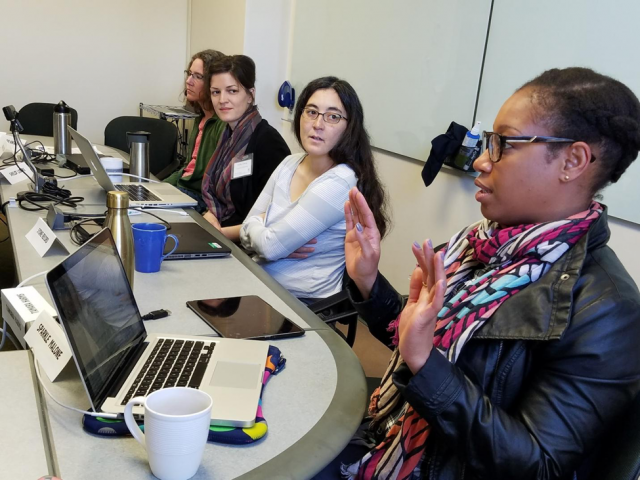Working Group Model
We can discover and do more together.
We believe in the value of collaboration. Our research happens in teams of researchers from around the world, called working groups.
Working groups are typically composed of 12 to 18 experts from a range of disciplines, sectors, career stages, and institutions. They come together for short periods of time, often at our headquarters in Santa Barbara, to tackle large-scale questions in basic and/or applied science, using the synthesis approach.
Each participant brings their data, methods, experiences, and perspectives, while NCEAS offers logistical and technical support to facilitate their innovation.
By integrating diverse perspectives and data sources, our working groups can connect dots, discover gaps in knowledge, and reveal untapped insights.
In fact, research has shown the diversity of participants in our working groups is key to enabling greater productivity and problem-solving capacity (see Hampton and Parker, 2011 and Campbell et al., 2013).
A model for impact
We are pioneers of the working group model in ecology, and we continue to promote the value of collaborative science.
The working group model is designed to accelerate discovery and increase the impact science can have on decisions to enable people and nature to thrive.
NCEAS working groups have advanced scientific understanding in ecology and the environmental sciences significantly over the past two decades. Because their results reflect a scientific consensus, many have also been able to influence policy and natural resource management.
-
Organize a Working Group
We invite researchers to form working groups around specific questions or topics through periodic calls for proposals.
View Calls for Proposals

